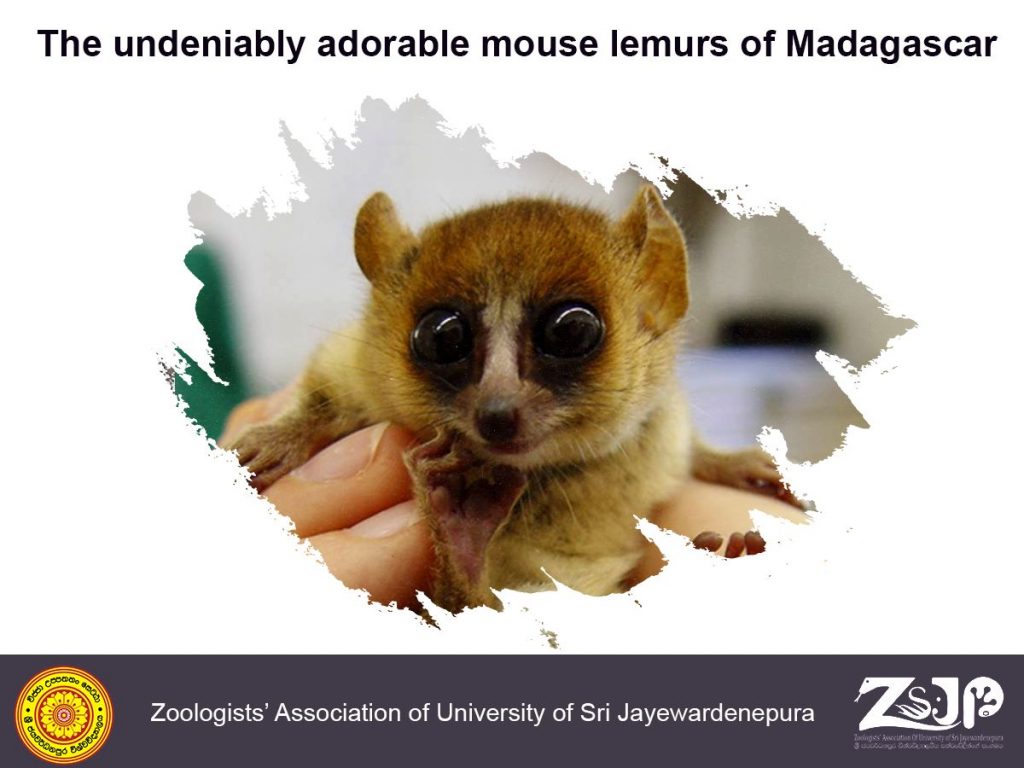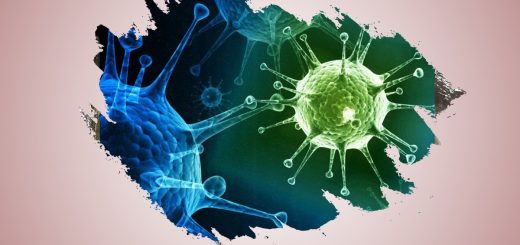The undeniably adorable mouse lemurs of Madagascar
Article by- Breverly Fernandez

Anyone who has enjoyed watching the movie series “Madagascar”, would have surely loved the character of ‘Mort or Mortdecai’. Many of you would have thought he was a rodent. But he’s in fact a primate. This cute and adorable creature that has captured so many hearts is known to be a Goodman’s Mouse lemur belonging to the species, Microcebus lehilahytsara. Mouse lemurs of Microcebus spp. are the world’s smallest primates and are usually used as genetic model organisms, to obtain a better understanding of primate biology and behaviour. The main characteristics that make these prosimian primates, perfect candidates for research are their very small size, short generation time and high fecundity, with a litter size ranging from 1 to 4. Being native to Madagascar, they have been observed to have a wide distribution throughout the island, in a variety of biomes. The Goodman’s mouse lemur, which was only discovered from Andasibe of Madagascar in 2005, by the primatologist Steve Goodman, after whom the animal had been named, inhabits eastern Madagascar’s rainforests and has been listed under the “vulnerable” category in the IUCN Red List in 2014. It has a recorded average body length of around 9-9.1 cm and has an average body mass that lies in the range of 39.6 – 48g. Its body has a maroon hue, with a whitish ventrum and its back, head and tail are orange in colour. Just like the other mouse lemurs, it also has a white stripe between its eyes. This nocturnal creature is known to feed on an omnivorous diet, that varies depending on the season. One of the most interesting facts about the Goodman’s mouse lemur is perhaps its ability to exhibit daily as well as seasonal torpor, where the former is an adaptation for energy management, while the latter serves in resource management at times of scarcity. Seasonal changes could actually have a depleting effect on the body temperature, body mass and metabolism of this primate. Unfortunately, these cute mouse lemurs are currently threatened due to habitat destruction as well as the prevalence of Madagascar’s largest mine within the species’ range.
References: –
Gron KJ. 2009 February 11. Primate Factsheets: Mouse lemur (Microcebus) Taxonomy, Morphology, & Ecology. http://pin.primate.wisc.edu/factsheets/entry/mouse_lemur/taxon
Dolch, R., Radespiel, U. & Blanco, M. 2020. Microcebus lehilahytsara. The IUCN Red List of Threatened Species 2020:e.T136199A115580879 https://dx.doi.org/10.2305/IUCN.UK.2020-2.RLTS.T136199A115580879.en.
Ezran, C., Karanewsky, C., Pendleton, J., Sholtz, A., Krasnow, M., Willick, J., Razafindrakoto, A., Zohdy, S., Albertelli, M. and Krasnow, M., 2017. The Mouse Lemur, a Genetic Model Organism for Primate Biology, Behavior, and Health. Genetics, [online] 206(2), pp.651-664. Available at: https://www.ncbi.nlm.nih.gov/pmc/articles/PMC5499178/
Article by- Breverly Fernandez
Design by- Dinul Anuka(ZSJP Media Crew)



